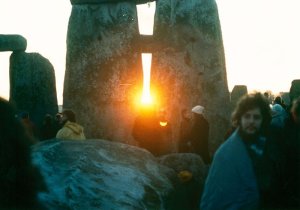

For the folks in the northern hemisphere, today is the long awaited winter solstice. Though, technically the first day of Winter, the Solstice marks the halfway point between the seemingly endless darkness that accompanies winter and the arrival of spring. The winter solstice also marks another occasion; the shortest day of the year (the actual time can vary by a few hours depending on your latitude).
Conversely, for the southern hemisphere, today is your summer solstice. Not only does it mark the first day of summer and the longest day of the year, but it is the embodiment of “things will only get worse from here” (doubly so for those of you that live in Australia). Soon, the hot, summer days, the tank tops and sunscreen are going to fade into a distant memory until temperate fall arrives. And before you get too comfortable with the moderate temperatures, winter will catch you by surprise, clutching your region in its sadistic grasp.

Now that we’ve discussed what the winter solstice means here on Earth, let’s discuss what the solstice means for Earth as a whole. In spite of your location, the December solstice is the time of year when the Sun is at its lowest point relative to Earth (about -25.5 degrees). The gif to the side helps to demonstrate this (the equator has a value of 0, moving North has a positive value and moving South has a negative value). Because of these mechanics, from the perspective of the Northern Hemisphere, the Sun will be at the lowest in the sky. Likewise, the southern hemisphere will see the Sun at its highest point in the sky.
Contrary to popular belief (in the northern hemisphere, at least), today IS the day the Earth is at its closest to the Sun. The hot/cold weather is not caused by the Earth’s distance to the Sun, but rather, it is cause by Earth’s tilt. In essence, the temperatures are created based on the angle with which sunlight hits the regions in question (also, the length of day helps).

Image Credit: Mark Grant
The Solstice has held a cultural significance for our species since the dawn of recorded history. Holidays, celebrations, and festivals usually happen around the solstice. The solstices (and the equinoxes) have been the centerpiece of our earliest architecture. Today, ancient monuments from all over the world will pay tribute to the Solstice as a “once a year” event happens. When the Sun rises and sets, it casts a shadow, makes a pattern, or will lineup in a specific way with these ancient tributes to the heavens.